 They both like the beach, poetry, spicy food, and slaughtering cruel despots. They'll make a perfect couple. 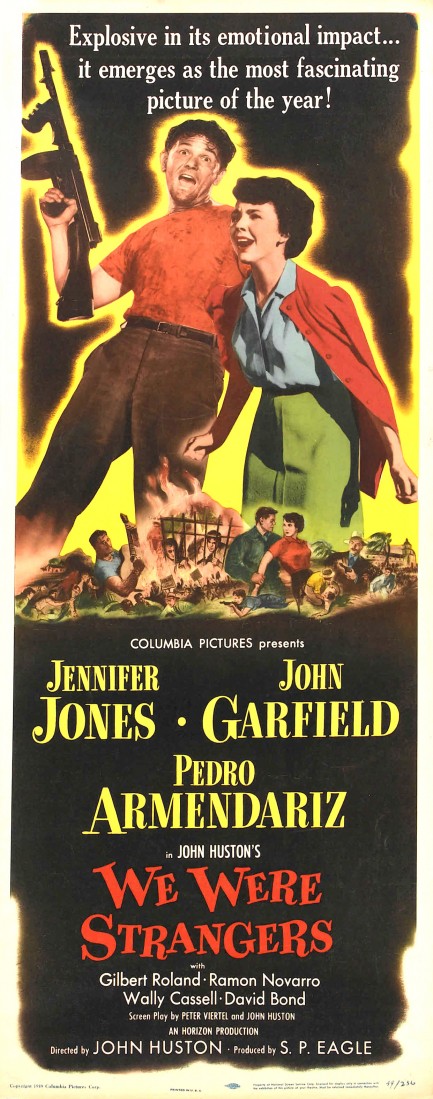 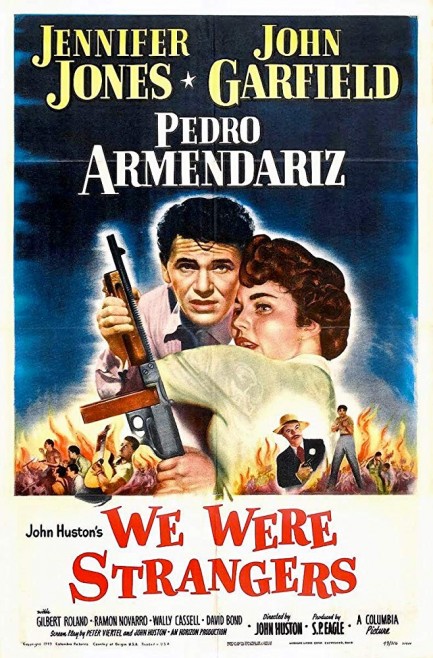
The above posters for We Were Strangers, one of which seems celebratory and another that is more dramatic, could give the impression of a studio that wasn't sure what kind of film it was trying to market. Legendary director John Huston made a habit of confounding executive suites, and here produced a film that probably came close to sending studio bigwigs plummeting in despair off high ledges. The story is set in Cuba during the early 1930s rule of dictator Gerardo Machado y Morales, and deals with revolutionaries who devise a plot to tunnel from a house near a graveyard to the site of a funeral they know the president will attend, and blow him to kingdom come with dynamite.
The movie stars John Garfield and Jennifer Jones, and is beautifully shot, but the characters aren't well written, nor are the performances sufficiently involving. There's nice action, though, especially at the climax. Since the central personalities are revolutionaries in Cuba, many critics denounced the film as Marxist propaganda, which it really isn't. It's just historical drama with unavoidable economic context. You wouldn't think it would be terribly controversial to say that for Americans to live income-wise far above the global average, substantial portions of the world must remain stuck below it, but on the other hand maybe it's understandable that we want to avoid thinking about how earning a nice profit is usually dependent upon others providing raw goods and hard work dirt cheap.
It's a shame the film isn't good enough to sweeten its message with high level drama and thrills. Huston was a workmanlike director who, despite helming numerous classics, wasn't any sort of auteur. He tried to tell stories in ways he felt was best for the material, but he also loved travel, which led him to accept projects based on the potential for exotic location work. Sometimes, as in The African Queen, he struck gold. Other times, as here, he spent a lot of investment capital and made a lot of Hollywood suits cry. We Were Strangers will be of interest to Havanaphiles, but in what was a famously up and down career, this effort comes out on the lower end of the Huston scale. It premiered in the U.S. today in 1949. 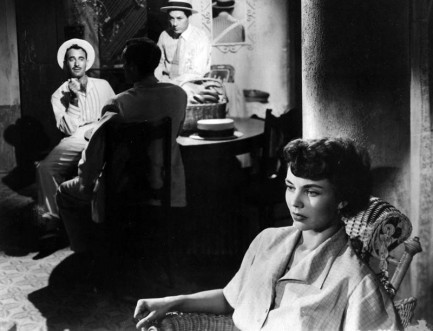 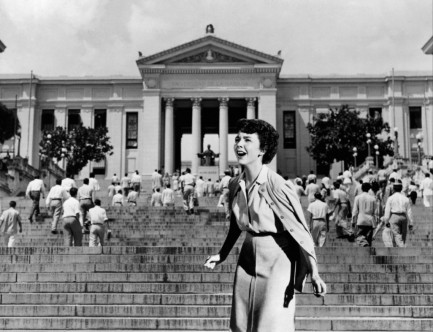 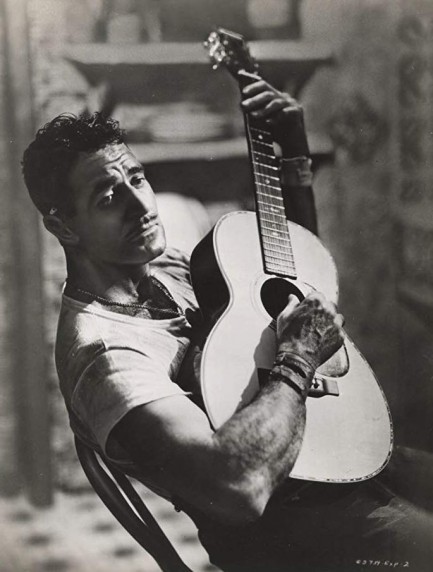 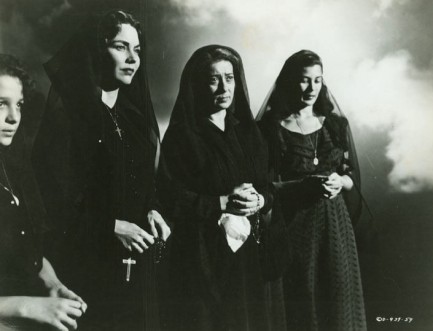 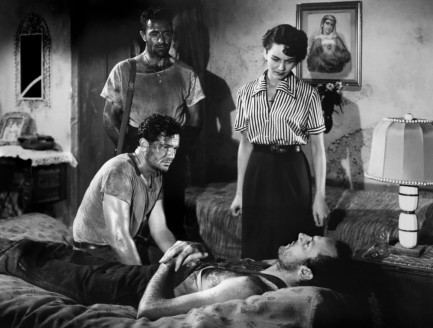 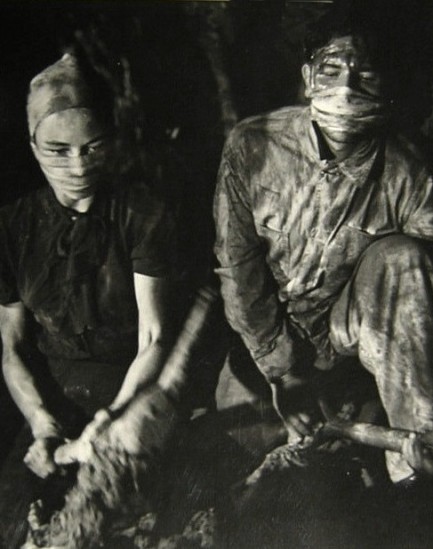
 There’s a reason she had such a sly expression on her face. 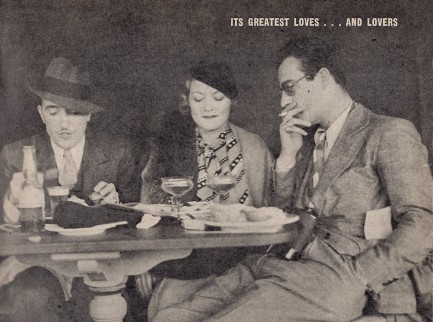
Here’s a scan from Sidney Skolsky’s This Was Hollywood showing Henri de la Falaise, actress Constance Bennett, and actor Gilbert Roland relaxing in 1933 at the Agua Caliente Hotel in Agua Caliente, Mexico. At the time Bennett was married to de la Falaise. They divorced in 1940 and the next year she married Roland. Knowing that really gives her devilish little smile a deeper meaning, don’t you think?
 Jane Russell heats up the tropical waters in treasure hunting adventure. 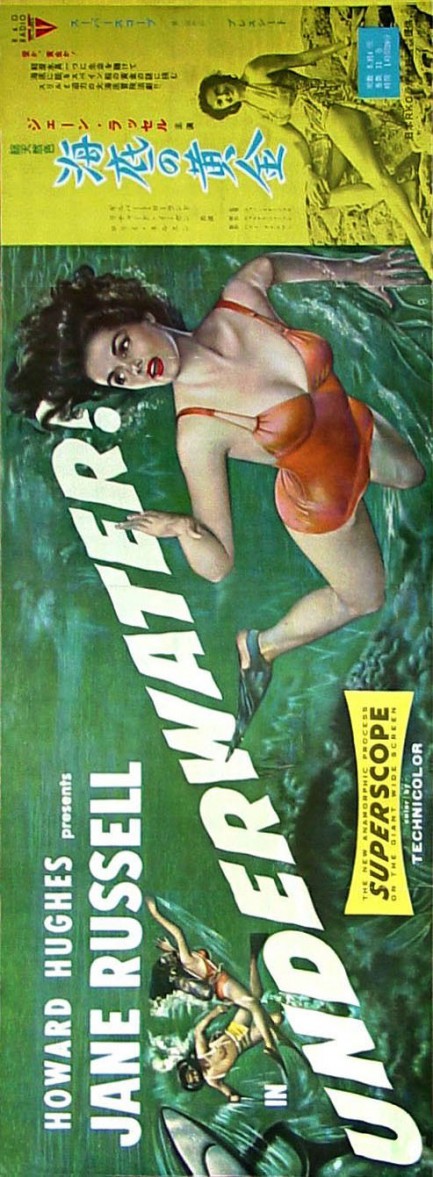
Every once in a while we come across a piece of art so amazing we have to post it rotated in order to ensure that it’s viewable at the largest possible size. In this case, it’s a Japanese promo poster for Jane Russell’s widescreen adventure Underwater!, in which Jane dives in the Caribbean, tries on a Cuban accent (intermittently), dances and flirts island style, and wears a couple of different swimsuits. The film was the brainchild of Howard Hughes, who specialized in thinking of ways to show off Russell’s breasts. We can only assume he shot bolt upright in bed late one night and cried, “Eureka! I’ll make them float!” He succeeded wildly, but in terms of time and treasure he may have gotten in deeper than he planned, since the film took three years and cost three million dollars. The money shows, and in stunning Technicolor, but otherwise Underwater! isn't special. Russell, Gilbert Roland, Lori Nelson, and Richard Egan (looking even more reptilian than usual), team up to salvage a Spanish galleon they believe went down off Cuba with a solid gold statue of the Madonna. If you happen to love Jane Russell, or can't resist Caribbean atmosphere, or are particularly adept at suspension of disbelief, or all three, then give this one a go. For all its flaws, we must confess we liked it. Underwater! premiered in Japan today in 1955.
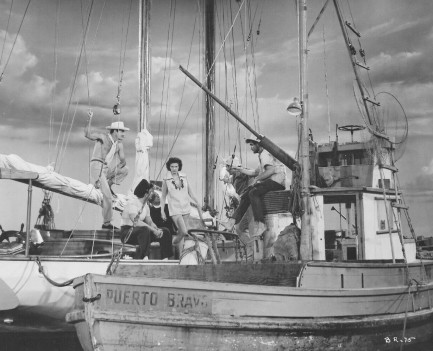 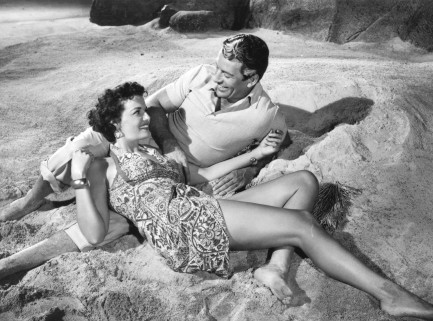 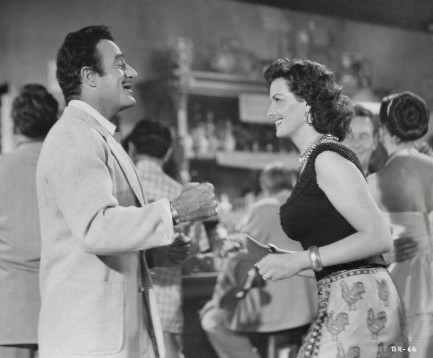 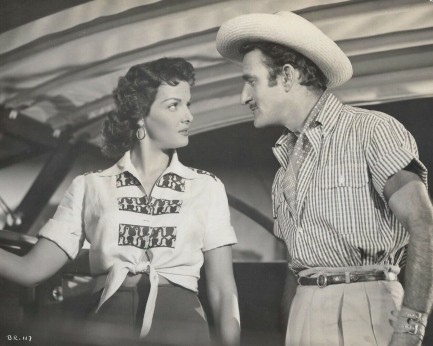 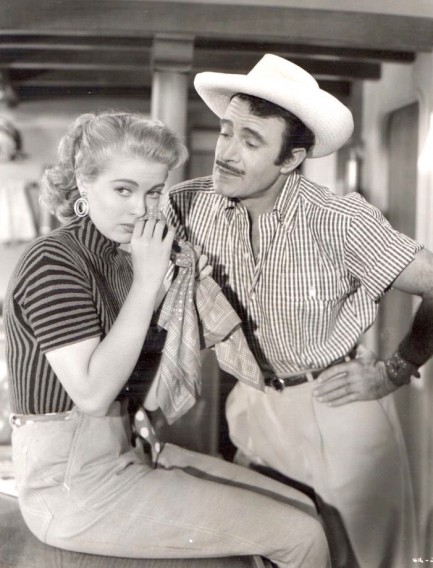 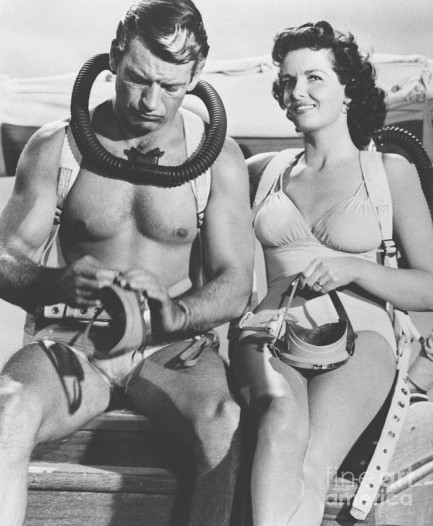 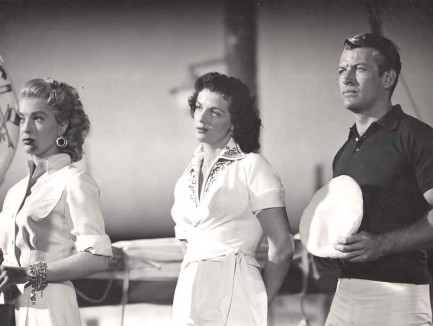 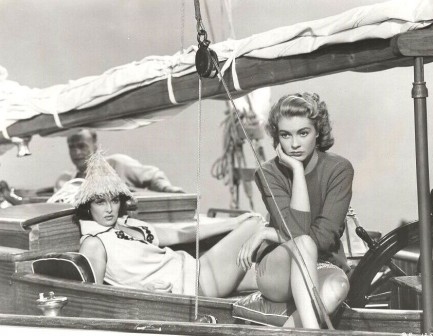 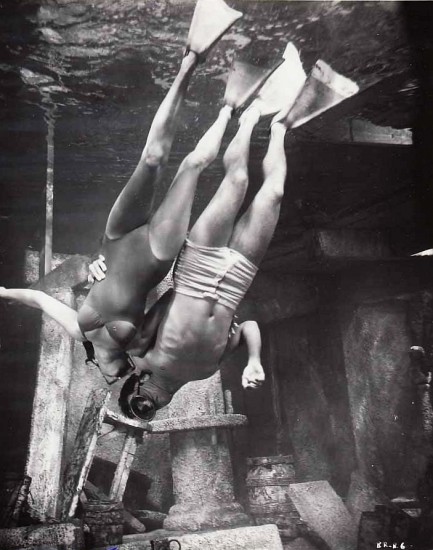 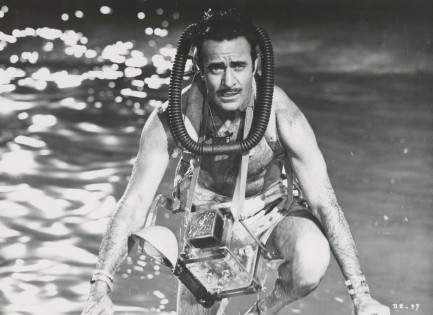 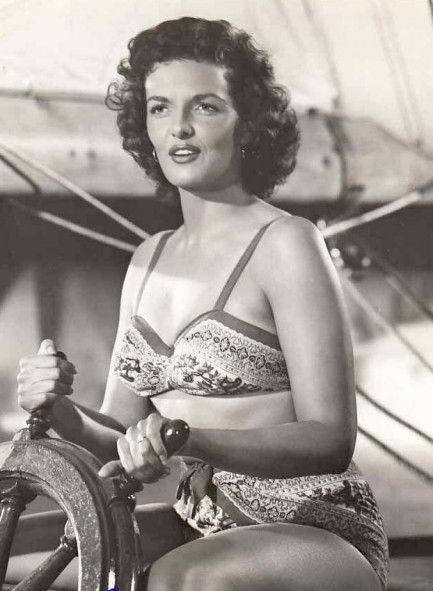 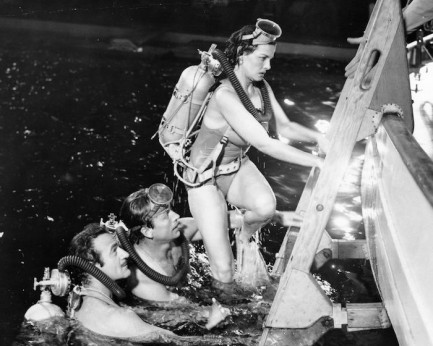 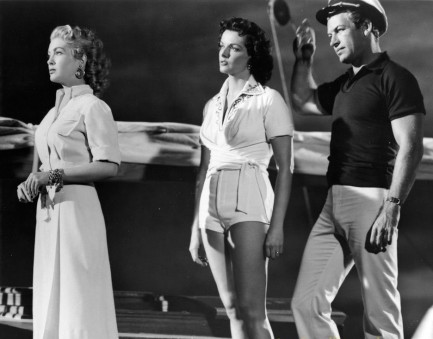 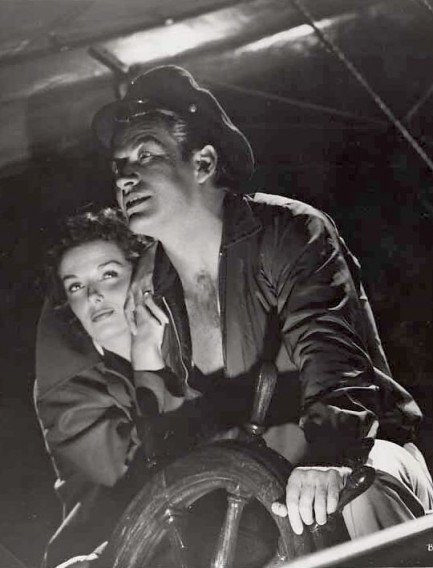
|
 |

The headlines that mattered yesteryear.
1927—Mae West Sentenced to Jail
American actress and playwright Mae West is sentenced to ten days in jail for obscenity for the content of her play Sex. The trial occurred even though the play had run for a year and had been seen by 325,000 people. However West's considerable popularity, already based on her risque image, only increased due to the controversy. 1971—Manson Sentenced to Death
In the U.S, cult leader Charles Manson is sentenced to death for inciting the murders of Sharon Tate and several other people. Three accomplices, who had actually done the killing, were also sentenced to death, but the state of California abolished capital punishment in 1972 and neither they nor Manson were ever actually executed. 1923—Yankee Stadium Opens
In New York City, Yankee Stadium, home of Major League Baseball's New York Yankees, opens with the Yankees beating their eternal rivals the Boston Red Sox 4 to 1. The stadium, which is nicknamed The House that Ruth Built, sees the Yankees become the most successful franchise in baseball history. It is eventually replaced by a new Yankee Stadium and closes in September 2008. 1961—Bay of Pigs Invasion Is Launched
A group of CIA financed and trained Cuban refugees lands at the Bay of Pigs in southern Cuba with the aim of ousting Fidel Castro. However, the invasion fails badly and the result is embarrassment for U.S. president John F. Kennedy and a major boost in popularity for Fidel Castro, and also has the effect of pushing him toward the Soviet Union for protection.
|

|
|

It's easy. We have an uploader that makes it a snap. Use it to submit your art, text, header, and subhead. Your post can be funny, serious, or anything in between, as long as it's vintage pulp. You'll get a byline and experience the fleeting pride of free authorship. We'll edit your post for typos, but the rest is up to you. Click here to give us your best shot.

|
|































































































